Japan and South Korea Private Tour
Local Time
Why You Should Go
Itinerary curated by Zen Lynch
We freely admit Japan is our favorite destination in the entire world! Japan is singular among Asian cultures in its amazing ability to assimilate and synthesize foreign cultures and influences. The contrast between Japan’s orderly, balanced Shinto and Buddhist-centered culture and its hyper-innovative technology-driven economy is compelling.
One should visit Japan and Seoul for an unforgettable East Asian adventure, blending rich traditions with modern marvels. In Japan, immerse yourself in the captivating beauty of cherry blossoms, ancient temples, and serene tea ceremonies, while also experiencing the bustling energy of cutting-edge cities like Tokyo and Osaka. Japan offers a unique cultural tapestry, from samurai heritage to innovative technology, along with a mouthwatering array of cuisine. Meanwhile, Seoul, South Korea, enthralls visitors with its seamless blend of old and new. Explore the historic palaces and colorful markets showcasing centuries-old customs, then indulge in K-pop and futuristic shopping districts. Both Japan and Seoul promise to captivate your senses, leaving you with cherished memories of a diverse and enchanting Asian sojourn.
Another Japan travel perk: no visas, no shots, no pills necessary!
Best Travel Time: Spring Summer Fall
*All of our comprehensive private tour itineraries are inclusive of all luxury accommodations, private guide/driver throughout, daily meals as specified, INTERNAL flights/rail /private transfers as needed, & all taxes/service fees.
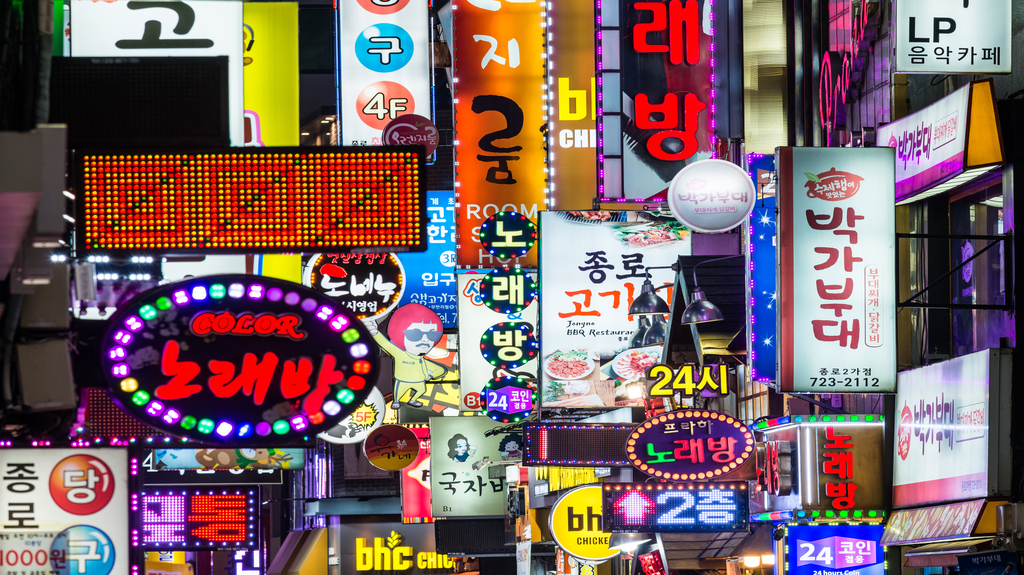
Sample Itinerary
14 Days
Each private luxury tour is custom to the wishes of each client. This itinerary is a sample. Partnering with our long-established relationship with United Airlines, our sister company, TRAVNET, may provide competitive Polaris/Business Class international airfare, along with mileage points conversion.
Day 1
Fly to Tokyo
Through our sister company, premium air provider TRAVNET, we may assist with your international airfare, as well as with mileage points conversion.
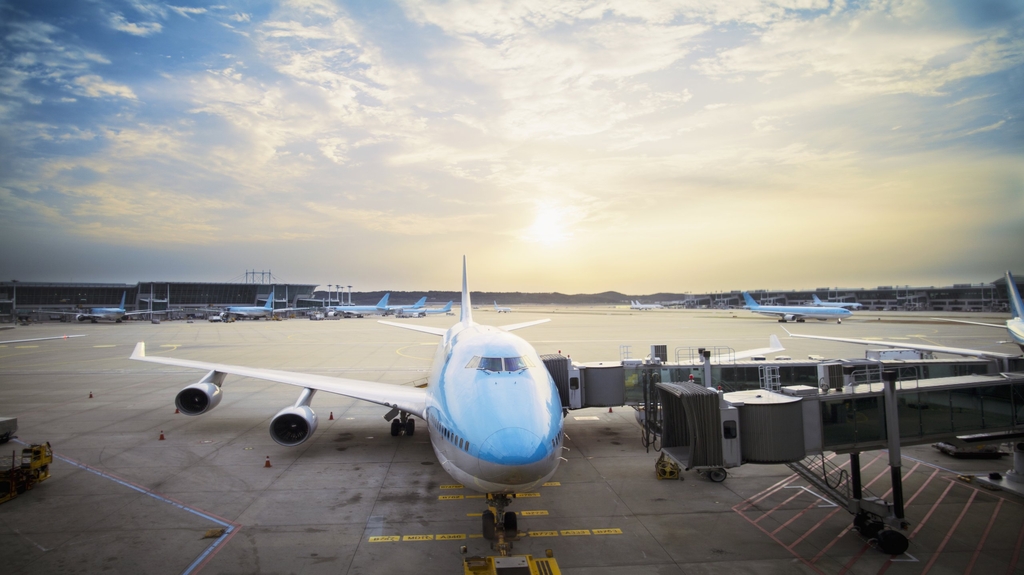
Day 2
Arrive Tokyo
Upon arrival in Tokyo, you will be privately transferred to the Aman Tokyo or the Peninsula Tokyo. While in Tokyo, you may be able to catch a sumo wrestling match or a baseball game! Click on the link to read our blog posts on Sumo: Japan’s National Sport and Japan’s Unique Baseball Culture.
Accommodations: Aman Tokyo or The Peninsula Tokyo
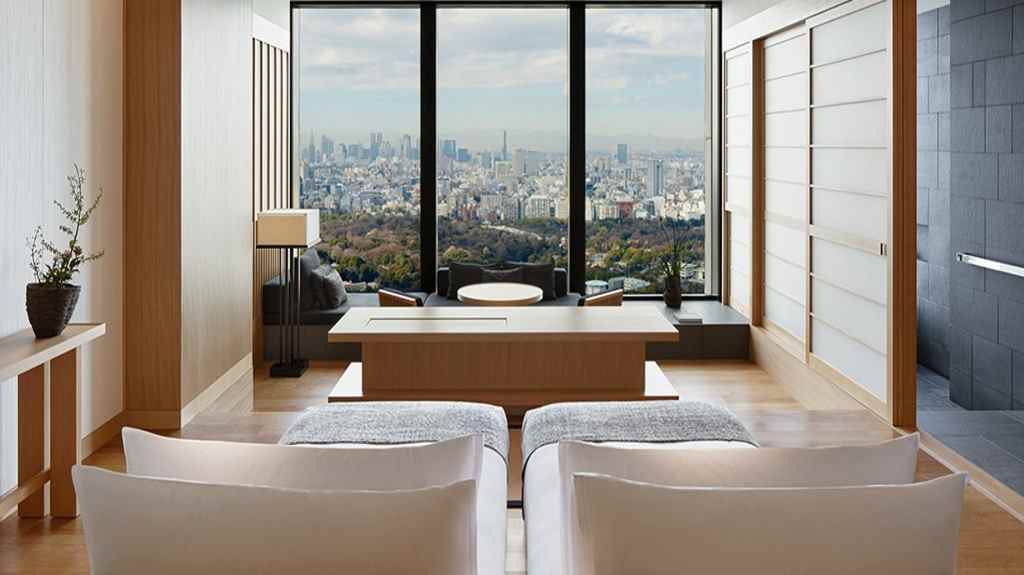
Day 3
Tokyo Private Tour
Your tour today will begin with a visit to the Meiji Shrine, where, based on Shinto tradition, you may write your prayer on a wooden block just outside of the shrine. You will continue to Higashi Gyoen, the east garden at the Imperial Palace, considered one of the most beautiful gardens in all of Tokyo. You will also visit the Akihabara and Harajuku shopping district and the Yasukuni Shrine, controversial due to its enshrinement of Japan’s wartime leader General Hideki Tojo, and 13 other Class-A war criminals (found guilty of war crimes by the Allied forces after World War II).
Meals: Breakfast
Accommodations: Aman Tokyo or The Peninsula Tokyo
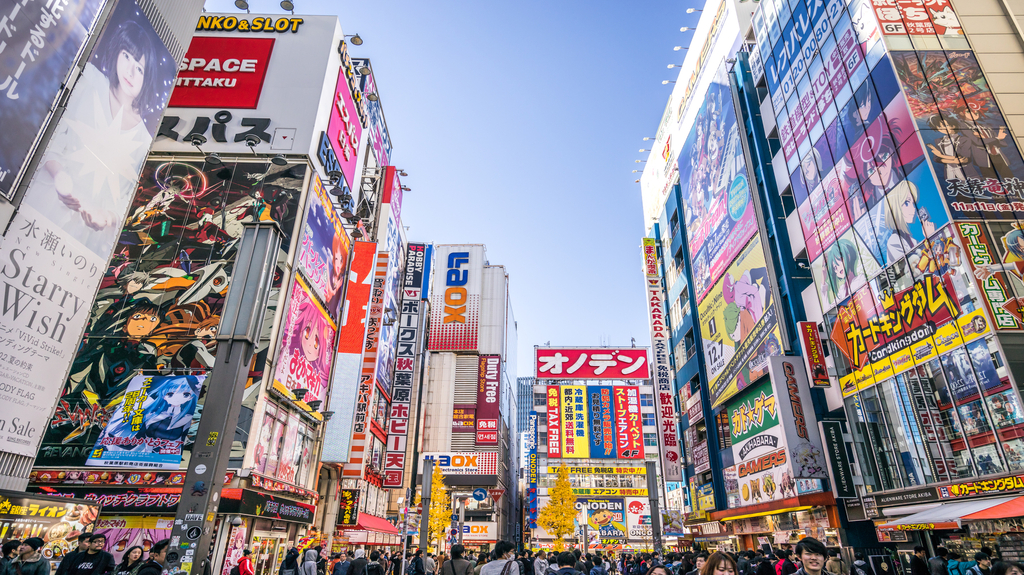
Day 4
Private Transfer Tokyo/Mt. Fuji/Hakone
Today, you will travel to the Mt. Fuji visitor’s station and be guided to the fifth station on the mountain for the opportunity to hike the Ochudo Trail. The Ochudo Trail, also known as the “boundary between heaven and earth”, is a walking path that circles Mt. Fuji halfway up the mountainside. This trek includes the Oniwa Garden and ends at the Okuniwa bus stop; this hike is roughly 2.5 miles and will take approximately two hours. Following your energizing hike, you will be driven to the Gōra Kadan ryokan.
Meals: Breakfast & Dinner
Accommodations: Gōra Kadan or Ginyu Ryokan
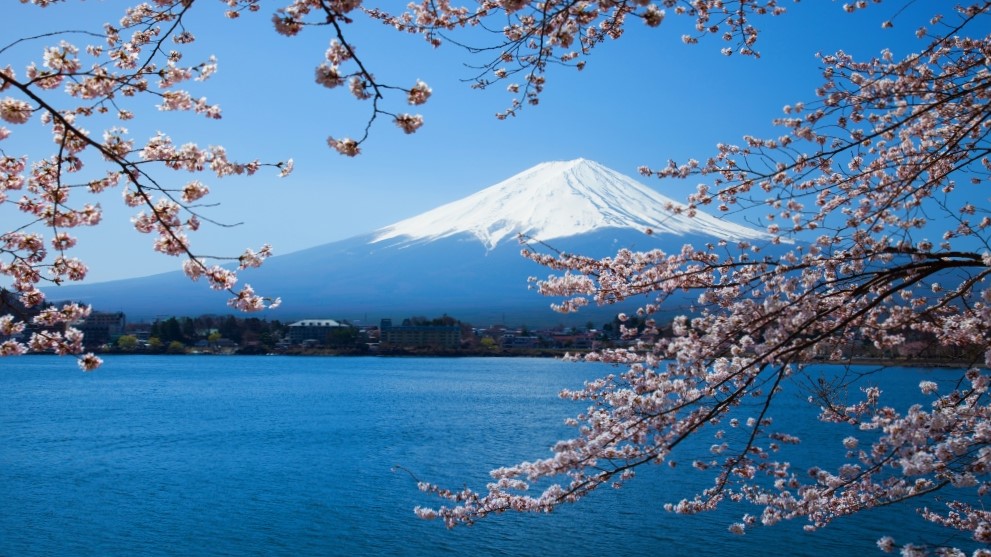
Day 5
Hakone Private Tour
Following breakfast at the Gora Kadan, your private tour options will include a Lake Ashi boat excursion, Jinja Shrine, and the Owakudani Valley, an active volcanic valley famous for black-boiled eggs! Another stopover will be the Hakone Open Air Museum amidst a mountain setting, which successfully balances art with nature. The indoor galleries are also interesting – most compelling is the museum’s significant Picasso collection.
Meals: Breakfast & Dinner
Accommodations: Gōra Kadan or Ginyu Ryokan
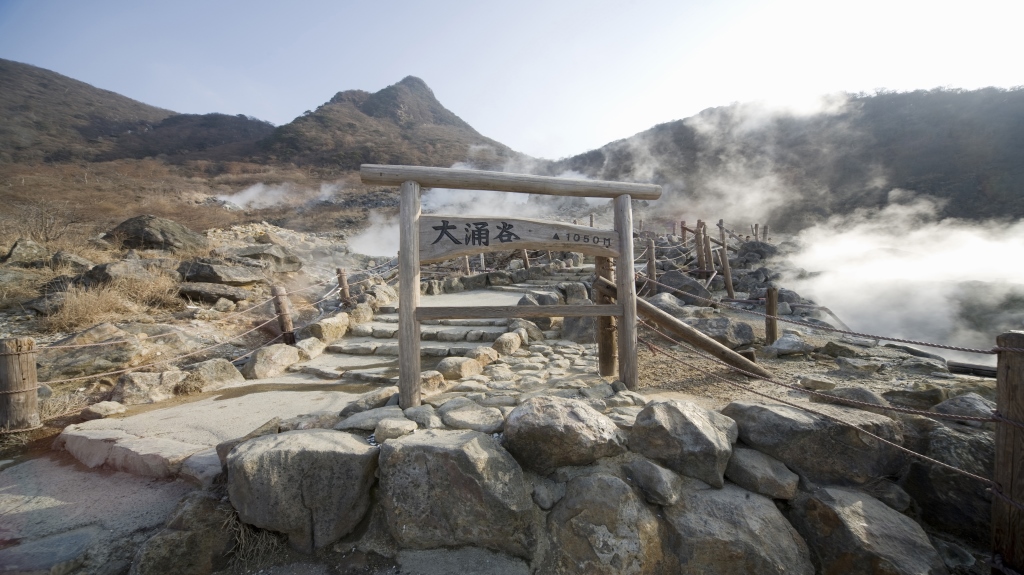
Day 6
Shinkansen Odawara/ Kyoto
Following breakfast, you will be assisted by our representative in boarding the Shinkansen from Odawara Station to Kyoto Train station
Meals: Breakfast & Dinner
Accommodations: Kayotei
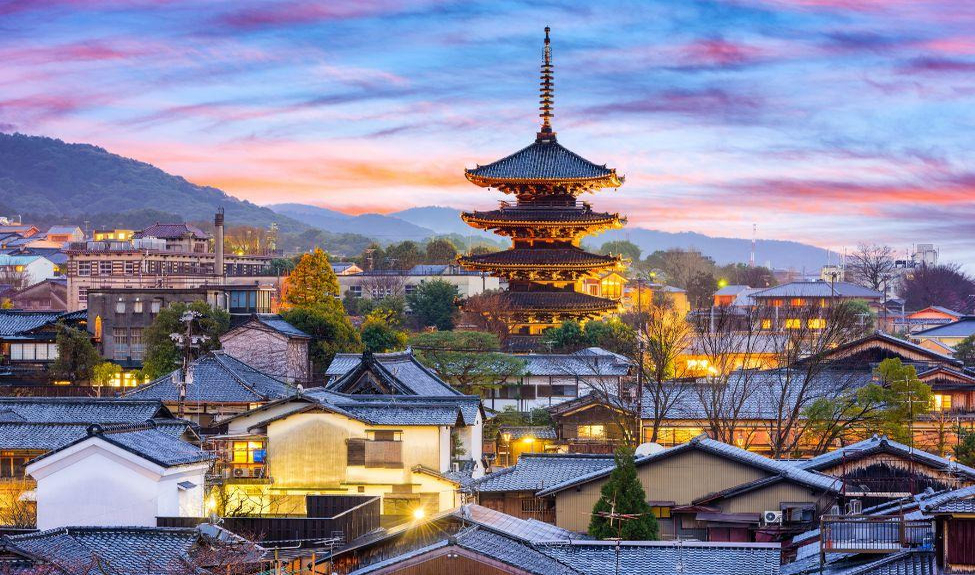
Day 7
Kyoto Private Tour
You will begin your day in Kyoto with your private guide along the Philosopher’s Walk, a 1.2-mile path that covers five temples and two shrines, paralleling a beautiful canal/stream. After the walk, you will continue to Shirakawa Minami-Dori Street in Gion, which has wonderfully preserved wooden structures, with various restaurants and ryokans. In the afternoon, you will visit the Fushimi Inari Taisha Shrine, perhaps our favorite shrine in Japan. Dating back to the eighth century, the shrine includes a wandering pathway around three miles up the mountain lined with hundreds of beautiful red-orange torii.
Meals: Breakfast
Accommodations: The Ritz-Carlton Kyoto or Aman Kyoto
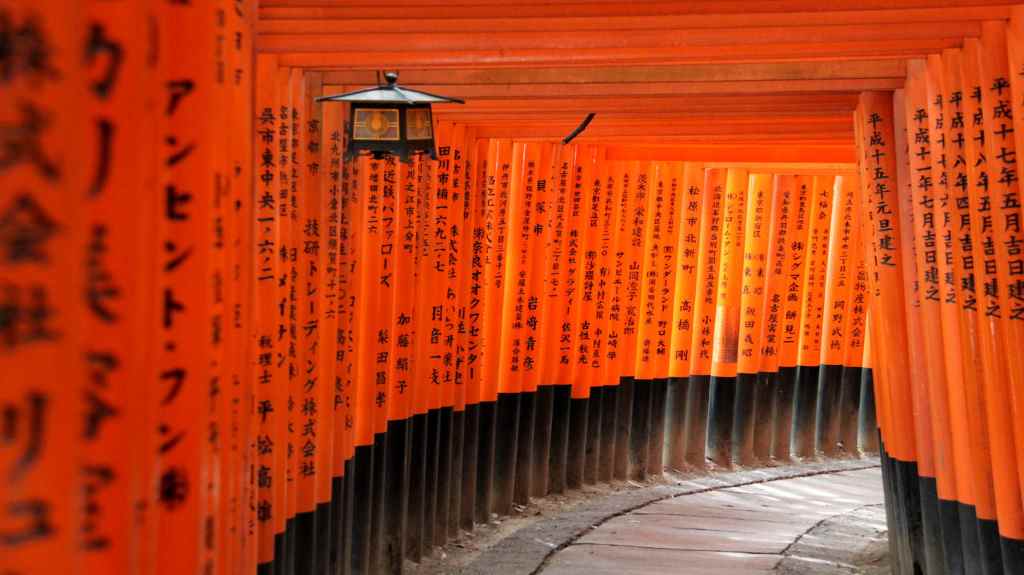
Day 8
Saiho-ji Gardens Private Tour + Tea Ceremony
There is nothing casual or fortuitous about a visit to Saiho-ji Temple and its garden. You may visit by prior appointment only via a written request to the administering monks. Unlike the mass tourism that envelops much of Kyoto, the Saiho-ji priests hope to retain a solemn, meditative atmosphere in the temple and gardens.
You will also participate in a traditional tea ceremony with over a dozen steps including the respectful exchange of greetings, eating the tea sweets, and mixing the green powder tea and water with the bamboo whisk.
Meals: Breakfast
Accommodations: The Ritz-Carlton Kyoto or Aman Kyoto
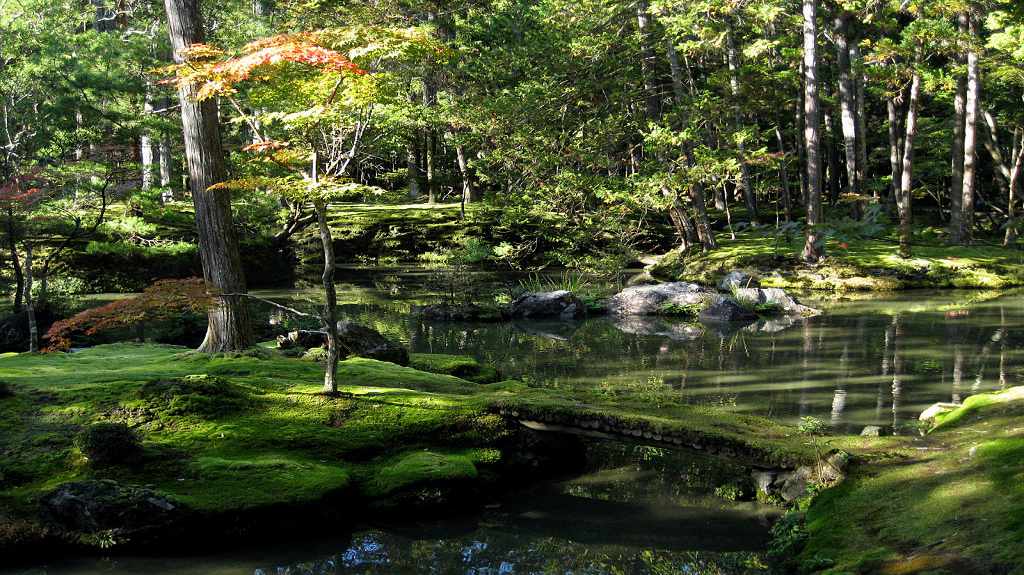
Day 9
Arashiyama Private Tour
Today, you will enjoy a full-day tour in Arashiyama including Monkey Park (touristy but fun!), the surreal Sagano Bamboo Forest, Togetsu-kyō Bridge, Tenryū-ji Temple, and Ginkaku-ji “Silver Pavilion”. In the late afternoon, you will be transferred to Hiiragiya Ryokan.
Meals: Breakfast & Dinner
Accommodations: Hiirigiya
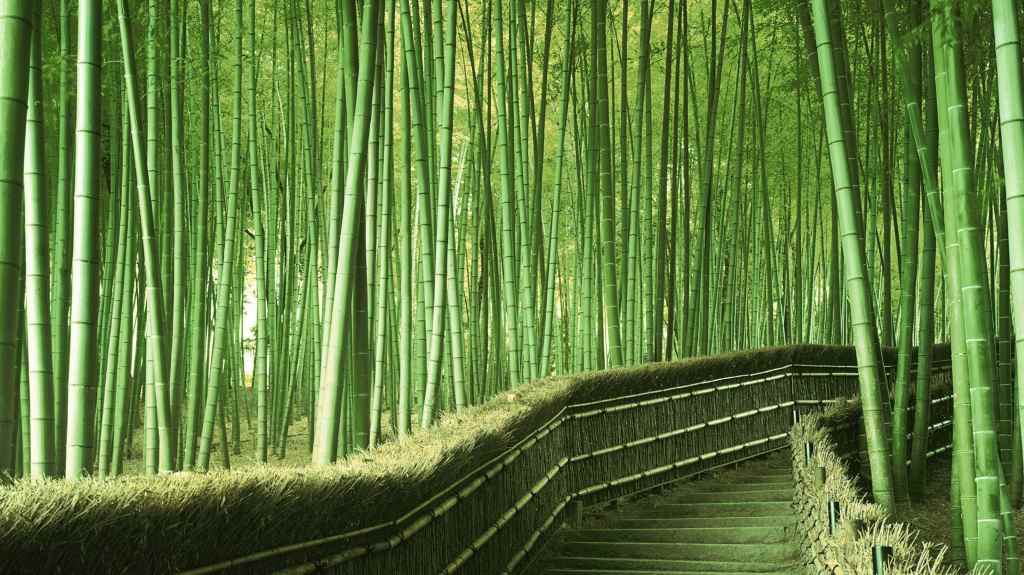
Day 10
Kyoto to Seoul
Following breakfast, you will be privately transferred to Kansai where you will be flown to Seoul, Korea by our famous alma mater Korean Air.
Upon arrival in Seoul, you will be welcomed by our local representative and transferred to the Four Seasons Seoul. Here, you will have the remainder of the day to unwind and enjoy the hotel’s amenities.
Meals: Breakfast
Accommodations: Four Seasons Seoul
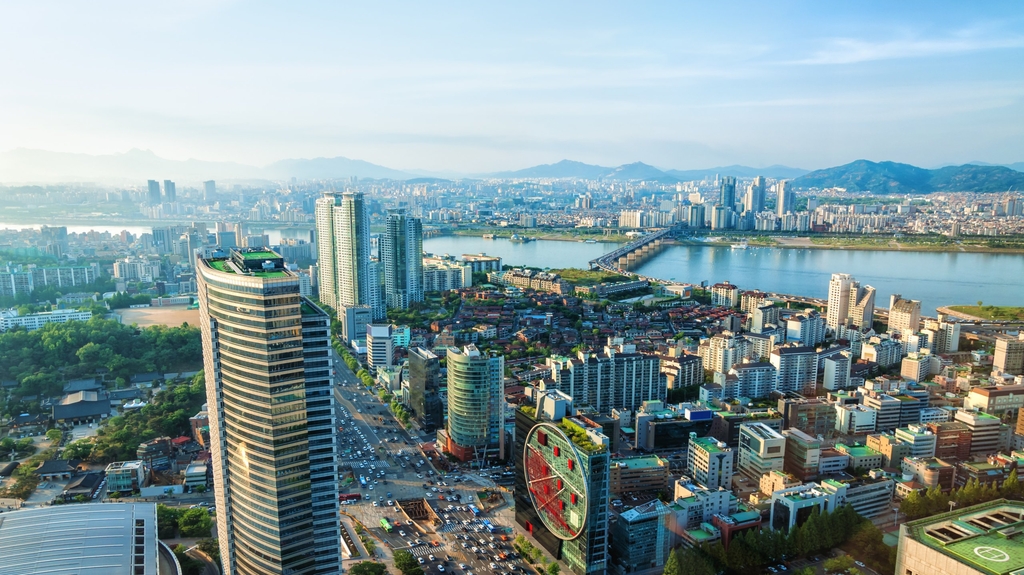
Day 11
Seoul Private Tour
Optional: Hanbok Wearing Experience
Following breakfast, embark on a full day of Seoul sightseeing. Stop by a local rental shop to personally select hanbok (Korean traditional clothing), available for both men and women.
You will tour Gyeongbokgung Palace, the political center of the powerful Joseon dynasty (1392 – 1910). Constructed in 1395, the palace grounds span 40 hectares (99 acres) and house 500 buildings. Strolling through the palace and gardens in a hanbok transports you to the Joseon dynasty.
For some light shopping and a bite to eat, stop at the iconic market in Insadong, known for its wide-ranging food stalls and craftwork stands. Conclude your day at the summit of Mount Namsan atop the observation deck of the N Seoul Tower (776 feet high!). With rotating art installations and performances, there are constant sights to explore.
During Zen’s graduation trip, there were traditional musicians and a martial arts performance illustrating how to use Joseon-era weapons. Later, their guide offered them the option to see Myeongdong at night, a neighborhood filled with boutiques, cafes, and an abundance of street food.
Meals: Breakfast
Accommodations: Four Seasons Seoul
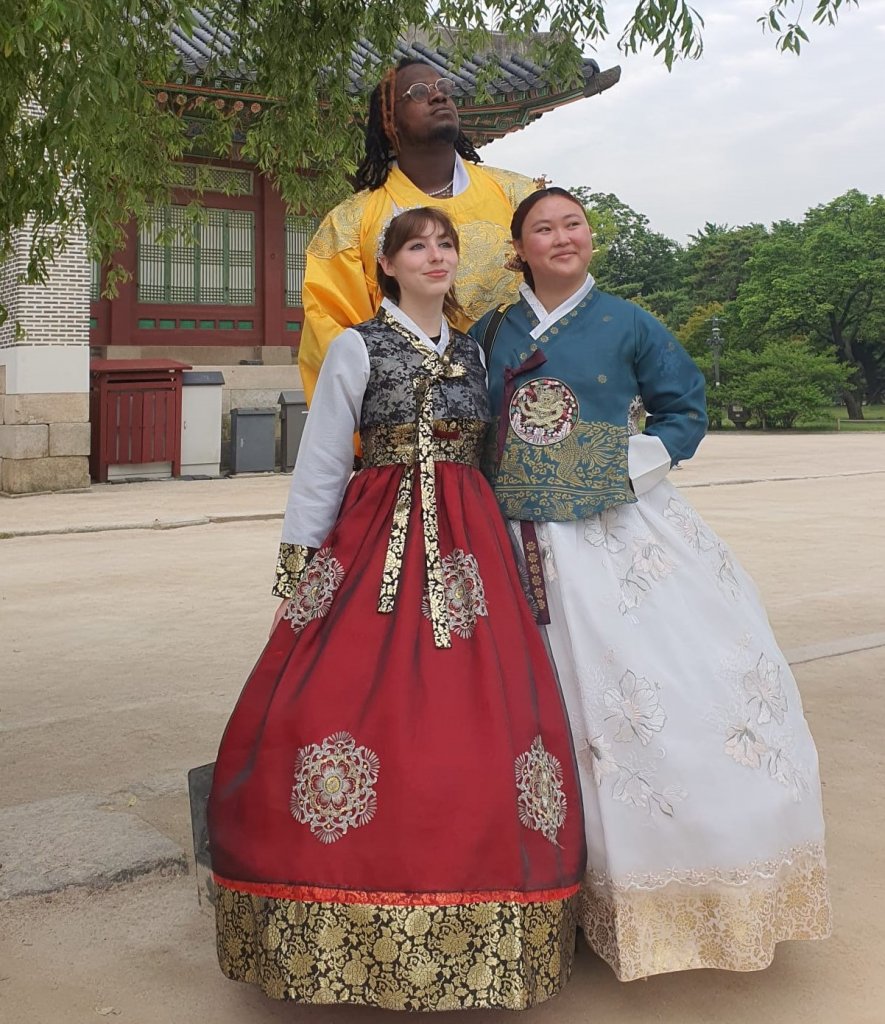
Day 12
Option: DMZ Excursion & Scenic Seoul Touring
This morning, you will join an organized group visit to the Korean Demilitarized Zone (DMZ), established in 1953 by the United Nations. This 160-mile-long strip of neutral land divides North and South Korea, embodying the long history of armed conflicts along the 38th parallel. Although private tours are not offered, the zone is a sobering sight to behold in the company of others.
Upon returning to Seoul, you will take a scenic, 40-minute ferry ride along the Hangang River through the heart of the city. During this journey, feel free to enjoy the scenery and architecture or feed the seagulls that stay close to the boat. Dried anchovies are available upon purchase to throw to the birds. For those feeling adventurous, you can hold the anchovy by the tail and the seagull will swoop it out of your hand (patience is necessary!).
Option: Color Analysis
Start your day with a visit to Cocory Personal Color. For those interested in fashion and self-image, color analysis works to find the colors best suited for one’s complexion so you can always know your complimentary hues for makeup and fashion. The aim is to look more vibrant and lively, specifically focusing on under the eyes and mid-forehead. There is a large focus on finding the aesthetic you feel represents yourself, in combination with the colors that look objectively good on you.
After this life-changing revelation (!), you will swiftly be taken to learn the skill of Kimchi making. The instructor will teach you the steps, from fresh cabbage to kimchi prepped, with the wait time significantly slimmed down. From there, each person can customize their kimchi to taste how they please. Within Zen’s friend group, the kimchi flavors ranged from “more fish sauce, less spice” to “allspice, barely any sauce.” Once packaged, feel free to snack on these treats throughout the trip or paired with meals.
For lunch visit Gwangjang, one of the largest traditional markets in Seoul. Opened in 1905, Gwangjang features over 5,000 unique shops and food stalls. We highly recommend stopping for a bowl of kalguksu (knife-cut noodle soup), as seen on the Netflix series, Street Food Asia. Foodies will also enjoy tteokbokki (spicy-sweet rice cakes), and other traditional street foods.
Option: Jjimjilbang Stopover
End your day with a visit to a jjimjilbang, a traditional Korean spa/bathhouse to soak, unwind, and nap. During Zen’s graduation trip, she and her friends enjoyed going between the furnace-like saunas and the ice room. Supposedly this method, while intense, provides the most health benefits and relaxation. Additionally, they each found their favorite spots to take naps to recuperate from their jet lag.
Meals: Breakfast
Accommodations: Four Seasons Seoul
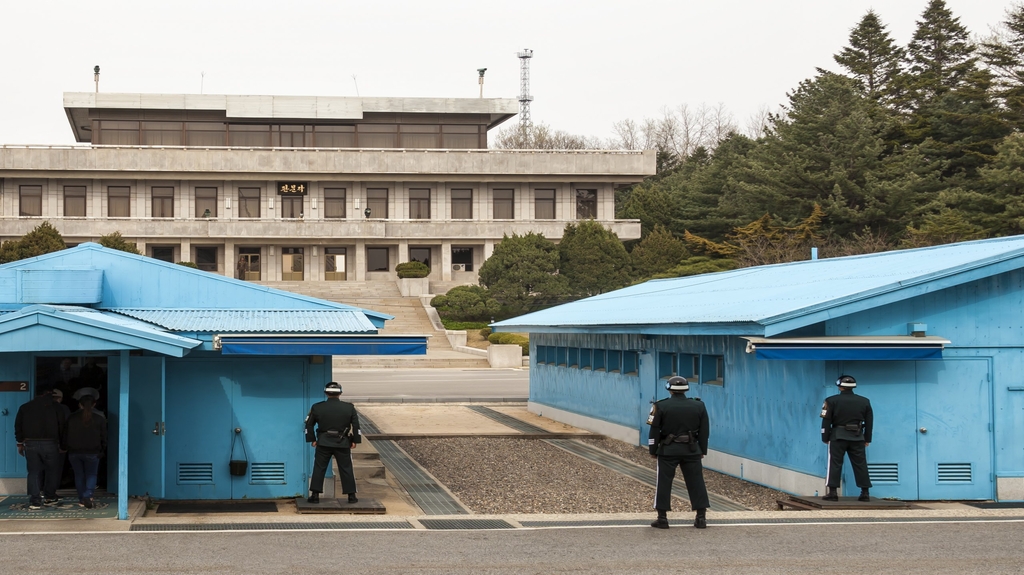
Day 13
Nami Island Private Tour
Following breakfast, take an excursion outside of Seoul to the fairytale-esque, Nami Island. Located less than two hours from central Seoul, Nami Island is the ultimate setting to enjoy nature and culture.
Getting to Nami Island is easy as there are various transportation options to suit any traveler — the Seoul Subway system, shuttle bus, or private car.
Namiseom garnered worldwide attention after it was the location site for various Korean dramas such as Winter Sonata. Since then, visitors have flocked to the same location to retrace the steps of their favorite K-drama characters and get a chance to explore the natural beauty of the half-moon-shaped island. Nami Island is beautiful at any time of the year and in any season. For those who want to feel like they are in a Hans Christian Andersen fable, Nami Island is the perfect addition. For an extended day on the half-moon-shaped island, there are plenty of “pensions,” or villas/short-term hotel and house rentals to spend the night.
Upon taking the ferry back from Nami Island and enjoying lunch, stopover at a local waterfall. Please note: the trail is quite steep so those with a fear of heights or respiratory issues should be wary.
After a brief drive, visit the Gangchon Rail Park. Each rail bike consists of four seats with pedals. The 40-minute course passes over scenic rice paddies, rivers, and mountains. There are even some tunnels, each with their own surprise. Some points can be a bit difficult to traverse, however, this leisurely ride can be taken at your own pace.
To close the day, visit Hongdae Street. Dubbed the “mural” street, the city has permitted graffiti artists to transform the streetscape into a colorful open canvas. Buzzing with life, Hongdae is filled with young people visiting streetwear and vintage shops, self-photo studios, and Korean BBQ spots.
Meals: Breakfast
Accommodations: Four Seasons Seoul
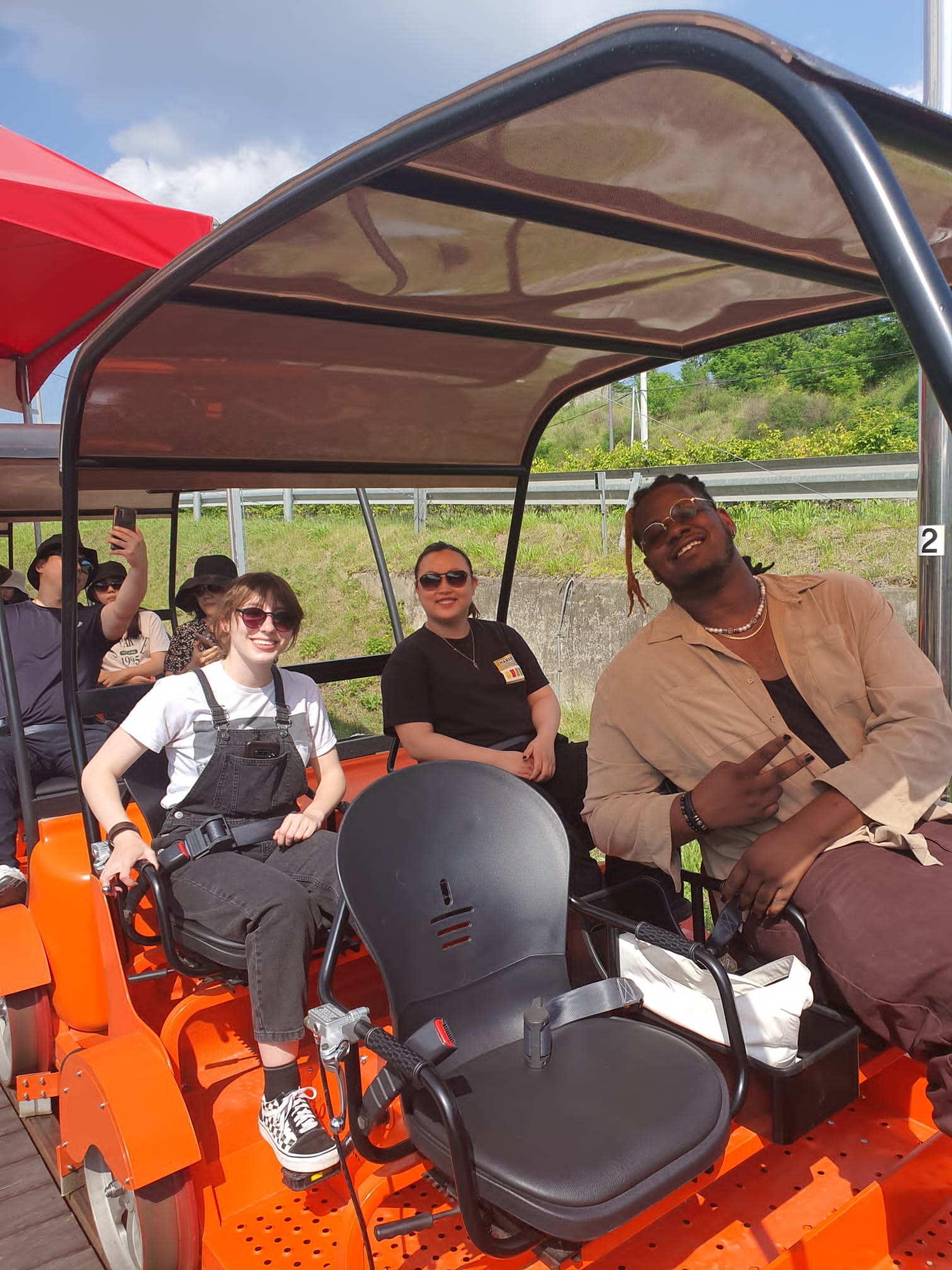
Day 14
Fly Seoul/Home
Following breakfast, enjoy the morning as you see fit. Before departing Korea, Zen and her friends went to Namdaemun to enjoy the street eats and last-minute shopping. For those interested in tech and electronics, Namdaemun is a great spot to look for cameras and other small items.
Once finished, you will be privately transferred to Seoul Incheon International Airport for your flight home.
Meals: Breakfast
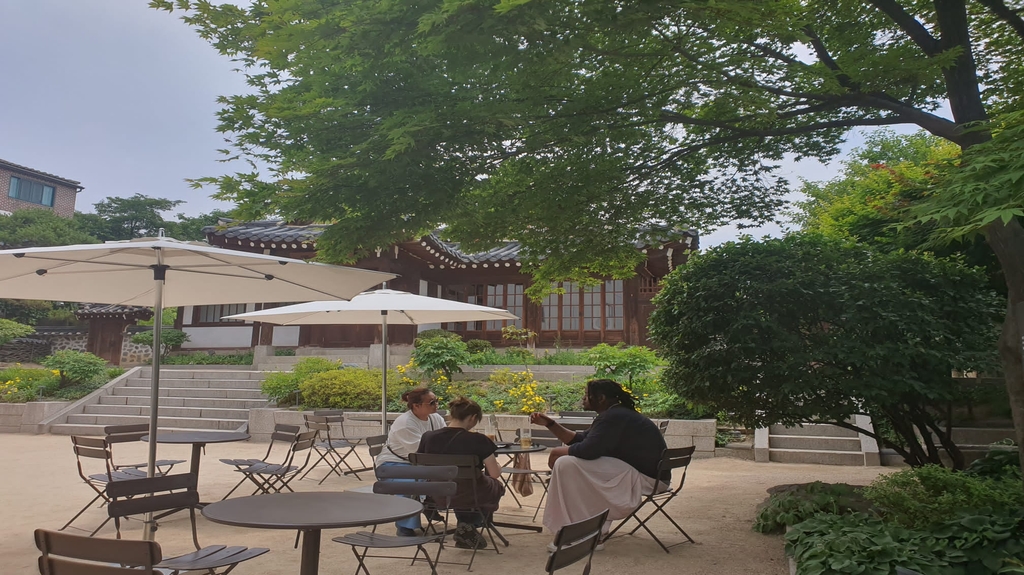
Hotels
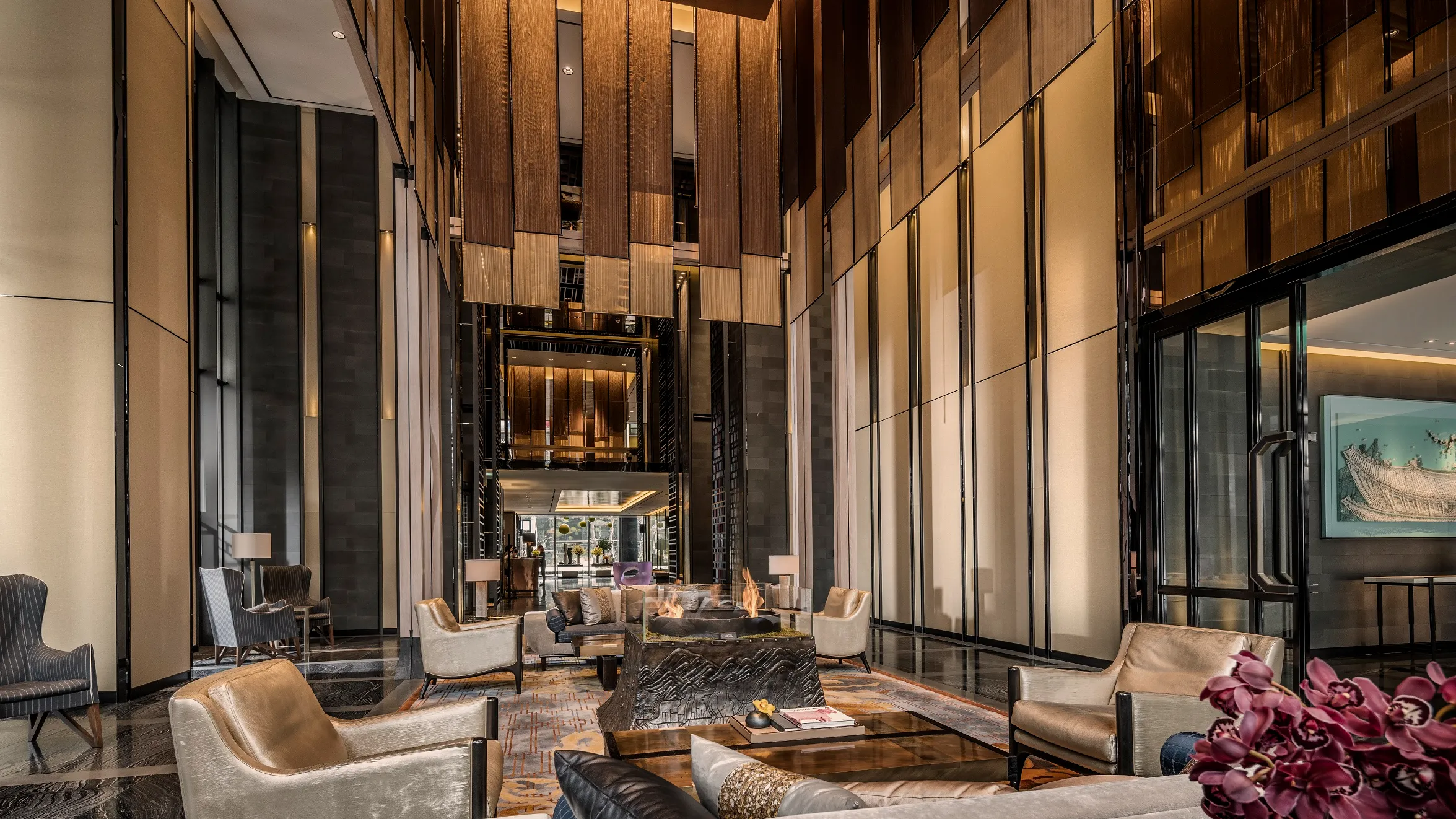
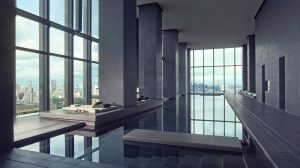
The 5-star luxury Four Seasons Seoul is our exception to 200+ room-size properties. Located in the heart of the city near Gwanghwamun Square, the rooms here are among the most spacious in Seoul, and all are equipped with modern comforts. The hotel recalls classic Korean design motifs while featuring sleek, contemporary elements. Here, there are several impeccable dining options, including the Michelin-starred Cantonese restaurant, Yu Yuan. The Four Seasons breakfast buffet is equally outstanding; it is located in The Market Kitchen, an eclectic bazaar of international cuisines with artifacts on display underneath glass floors. Amenities include a gym, pool, indoor golf simulator, and garden terrace. Enjoy!
Four Seasons Seoul

The 5-star luxury Four Seasons Seoul is our exception to 200+ room-size properties. Located in the heart of the city near Gwanghwamun Square, the rooms here are among the most spacious in Seoul, and all are equipped with modern comforts. The hotel recalls classic Korean design motifs while featuring sleek, contemporary elements. Here, there are several impeccable dining options, including the Michelin-starred Cantonese restaurant, Yu Yuan. The Four Seasons breakfast buffet is equally outstanding; it is located in The Market Kitchen, an eclectic bazaar of international cuisines with artifacts on display underneath glass floors. Amenities include a gym, pool, indoor golf simulator, and garden terrace. Enjoy!
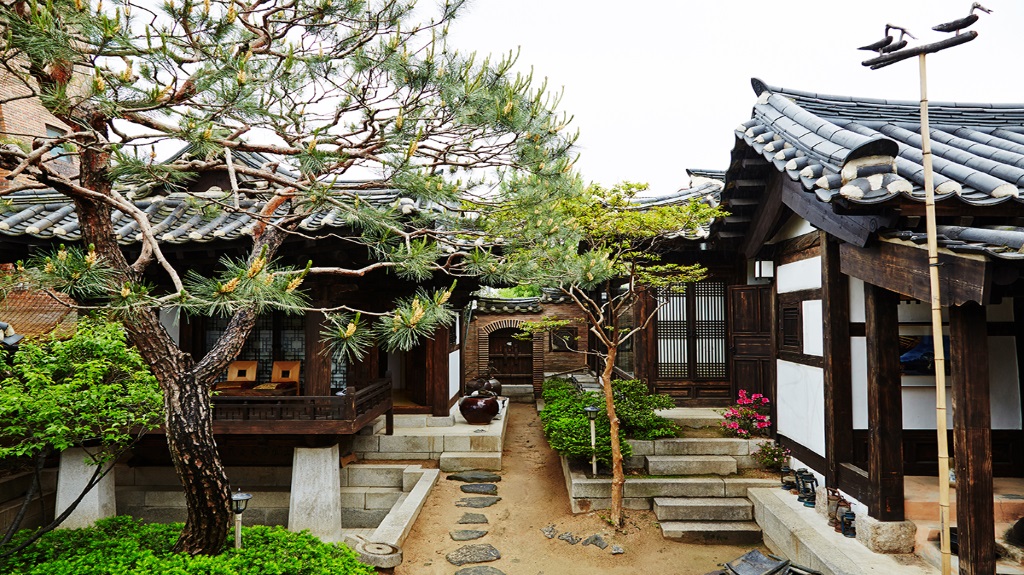

Being big fans of Japan’s luxury ryokans in Kyoto, we are excited to recommend Korea’s version, the hanok. Both hanoks and ryokans are traditional inns conceived to provide the visitor with a complete cultural immersion experience. Hanoks and ryokans share similar characteristics: welcoming guests with a hot cup of green tea, a choice of Western or Korean/Japanese breakfasts, futon-style bedding, and a sincere sense of hospitality. Resembling an aristocratic home in the Chosun Dynasty (1392-1897), Rakkojae Hanok offers a quiet, tranquil Korean cultural experience, in the midst of the noise and traffic of bustling Seoul.
Rakkojae Hanok

Being big fans of Japan’s luxury ryokans in Kyoto, we are excited to recommend Korea’s version, the hanok. Both hanoks and ryokans are traditional inns conceived to provide the visitor with a complete cultural immersion experience. Hanoks and ryokans share similar characteristics: welcoming guests with a hot cup of green tea, a choice of Western or Korean/Japanese breakfasts, futon-style bedding, and a sincere sense of hospitality. Resembling an aristocratic home in the Chosun Dynasty (1392-1897), Rakkojae Hanok offers a quiet, tranquil Korean cultural experience, in the midst of the noise and traffic of bustling Seoul.
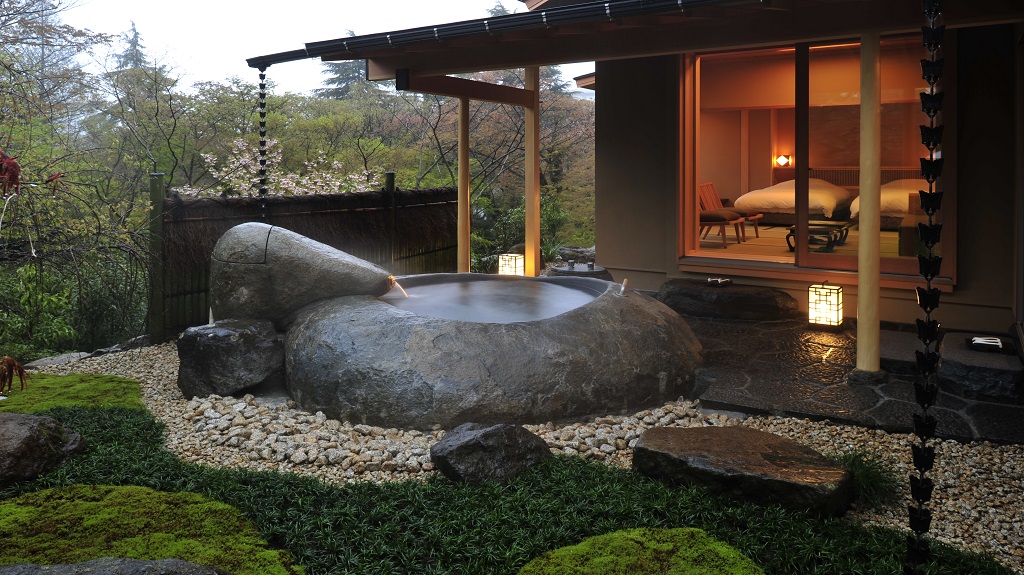
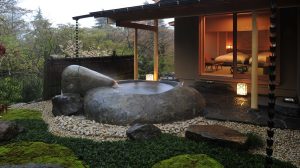
Gōra Kadan is a superb ryokan (traditional inn) that has managed to compromise gracefully with the modern Western world. Proprietress Mikawako, the third generation of Fujimotos to run Gōra Kadan, has blended traditional Japanese ryokan hospitality with modern, Western elements such as an ensuite bathroom, a television, and Wi-Fi/Bluetooth capability — all rare features in ryokans as these stays emphasize a disconnect from technology. The Gōra Kadan’s original building dates back 300 years and was the summer home of the Kan’in-No-Miya imperial family. The fusion of repurposing a former imperial structure into a luxury accommodation creates a lavish, restful ryokan spa experience. The Bettei suite is our absolute favorite here. The suite features not only a traditional tatami sleeping room, but also a living room, sitting room, private Japanese garden, and a private open-air stone bath for soaking.
Gora Kadan is part of our A-list for high-touch ryokans in Japan, with its airy, East-West fusion details, its wonderful Kaiseki multi-course dining experience, and total relaxation spa. Not to mention a sighting of a real-life A-lister, supermodel, Kate Moss, on our last visit to Gora Kadan!
Gōra Kadan
 Gōra Kadan is a superb ryokan (traditional inn) that has managed to compromise gracefully with the modern Western world. Proprietress Mikawako, the third generation of Fujimotos to run Gōra Kadan, has blended traditional Japanese ryokan hospitality with modern, Western elements such as an ensuite bathroom, a television, and Wi-Fi/Bluetooth capability — all rare features in ryokans as these stays emphasize a disconnect from technology. The Gōra Kadan’s original building dates back 300 years and was the summer home of the Kan’in-No-Miya imperial family. The fusion of repurposing a former imperial structure into a luxury accommodation creates a lavish, restful ryokan spa experience. The Bettei suite is our absolute favorite here. The suite features not only a traditional tatami sleeping room, but also a living room, sitting room, private Japanese garden, and a private open-air stone bath for soaking.
Gōra Kadan is a superb ryokan (traditional inn) that has managed to compromise gracefully with the modern Western world. Proprietress Mikawako, the third generation of Fujimotos to run Gōra Kadan, has blended traditional Japanese ryokan hospitality with modern, Western elements such as an ensuite bathroom, a television, and Wi-Fi/Bluetooth capability — all rare features in ryokans as these stays emphasize a disconnect from technology. The Gōra Kadan’s original building dates back 300 years and was the summer home of the Kan’in-No-Miya imperial family. The fusion of repurposing a former imperial structure into a luxury accommodation creates a lavish, restful ryokan spa experience. The Bettei suite is our absolute favorite here. The suite features not only a traditional tatami sleeping room, but also a living room, sitting room, private Japanese garden, and a private open-air stone bath for soaking.
Gora Kadan is part of our A-list for high-touch ryokans in Japan, with its airy, East-West fusion details, its wonderful Kaiseki multi-course dining experience, and total relaxation spa. Not to mention a sighting of a real-life A-lister, supermodel, Kate Moss, on our last visit to Gora Kadan!

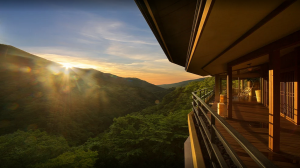 Though the east-west fusion luxury Gora Kadan Ryokan was our Lynch family’s first introduction to onsen in Hakone, we are also big fans of Ginyu Ryokan in Hakone. Despite having only 20 rooms, what stands out about Ginyu is that every single room has a private onsen and a terrace with views over the dense forest below. When first checking in one is most impressed with the aesthetically pleasing deck terrace overlooking the Hayakawa River. Ginyu’s four lodging types include “Hoshi” rooms, featuring a private onsen (open-air hot spring bath!), sliding wooden doors with lovely paper windows, a separate dining area (delicious Kaiseki dinners!), and traditional Japanese futon mattresses. Limited Western-style beds are available, though must be requested well in advance. Though small, the spa offers various relaxing massage/treatment experiences. Enjoy!
Though the east-west fusion luxury Gora Kadan Ryokan was our Lynch family’s first introduction to onsen in Hakone, we are also big fans of Ginyu Ryokan in Hakone. Despite having only 20 rooms, what stands out about Ginyu is that every single room has a private onsen and a terrace with views over the dense forest below. When first checking in one is most impressed with the aesthetically pleasing deck terrace overlooking the Hayakawa River. Ginyu’s four lodging types include “Hoshi” rooms, featuring a private onsen (open-air hot spring bath!), sliding wooden doors with lovely paper windows, a separate dining area (delicious Kaiseki dinners!), and traditional Japanese futon mattresses. Limited Western-style beds are available, though must be requested well in advance. Though small, the spa offers various relaxing massage/treatment experiences. Enjoy!
Ginyu Ryokan
 Though the east-west fusion luxury Gora Kadan Ryokan was our Lynch family’s first introduction to onsen in Hakone, we are also big fans of Ginyu Ryokan in Hakone. Despite having only 20 rooms, what stands out about Ginyu is that every single room has a private onsen and a terrace with views over the dense forest below. When first checking in one is most impressed with the aesthetically pleasing deck terrace overlooking the Hayakawa River. Ginyu’s four lodging types include “Hoshi” rooms, featuring a private onsen (open-air hot spring bath!), sliding wooden doors with lovely paper windows, a separate dining area (delicious Kaiseki dinners!), and traditional Japanese futon mattresses. Limited Western-style beds are available, though must be requested well in advance. Though small, the spa offers various relaxing massage/treatment experiences. Enjoy!
Though the east-west fusion luxury Gora Kadan Ryokan was our Lynch family’s first introduction to onsen in Hakone, we are also big fans of Ginyu Ryokan in Hakone. Despite having only 20 rooms, what stands out about Ginyu is that every single room has a private onsen and a terrace with views over the dense forest below. When first checking in one is most impressed with the aesthetically pleasing deck terrace overlooking the Hayakawa River. Ginyu’s four lodging types include “Hoshi” rooms, featuring a private onsen (open-air hot spring bath!), sliding wooden doors with lovely paper windows, a separate dining area (delicious Kaiseki dinners!), and traditional Japanese futon mattresses. Limited Western-style beds are available, though must be requested well in advance. Though small, the spa offers various relaxing massage/treatment experiences. Enjoy!
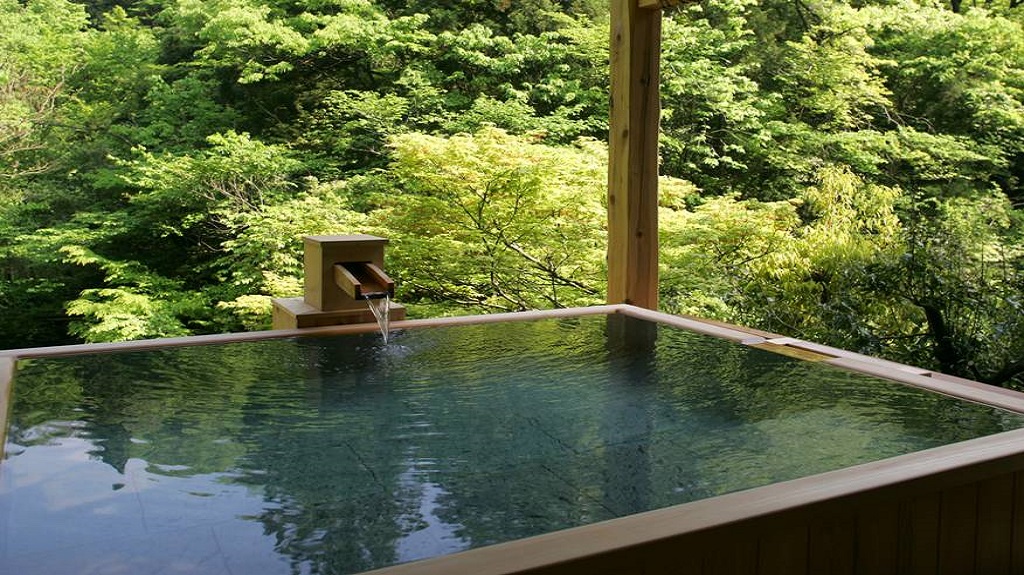
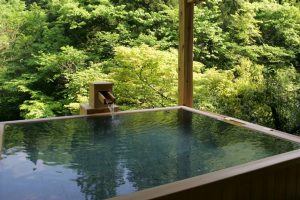
The Lynch family first discovered this heavenly place back in 2014. An approximately 1.5-hour drive south of Kanazawa, this 10-room ryokan retreat is arranged in traditional sukiya style, overlooking the pristine nearby Yamanaka River. Kayotei’s onsen/hot springs overlooking the deep-forested hills, provide a quiet, relaxing sanctuary for those wishing for a remote getaway. A walk along the river trails offers an invigorating experience before being served Kayotei’s locally-sourced kaiseki dinner. Being such a noteworthy local ryokan, Kayotei highlights the work of local artisans: woodworkers, papermakers, soy sauce brewers, among others!
Kayotei

The Lynch family first discovered this heavenly place back in 2014. An approximately 1.5-hour drive south of Kanazawa, this 10-room ryokan retreat is arranged in traditional sukiya-style, overlooking the pristine nearby Yamanaka River. Kayotei’s onsen/hot springs overlooking the deep-forested hills, provide a quiet, relaxing sanctuary for those wishing for a remote getaway. A walk along the river trails offers an invigorating experience before being served Kayotei’s locally sourced kaiseki dinner. Being such a noteworthy local ryokan, Kayotei highlights the work of local artisans: woodworkers, papermakers, and soy sauce brewers, among others!
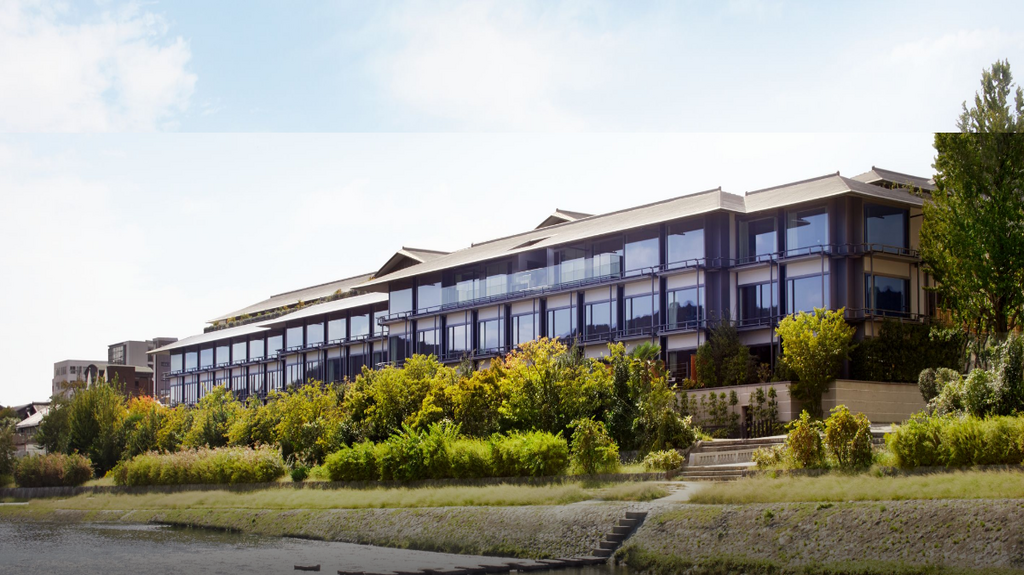

We feel the 134-room luxury Ritz-Carlton Kyoto to be our favorite Western 5-star property in Kyoto. Though we are not always fans of The Ritz-Carlton brand (preferring a less-pretentious, more understated style of luxyr), the property’s rectangular, low-slung property has definitely piqued our interest. Ideally situated along the Kamogawa River, The Ritz features glass floor-to-ceiling windows with views of the Higashiyama Mountains. The property was built on a site adored by 17th century Japanese nobility and replicates the aesthetics of a traditional Meiji House, making its design quite impressive (including a French Haute Patisserie!). Amenities and facilities include four onsite restaurants and bars (including Michelin-starred Tempura Mizuki!), a sleek indoor pool, a serene stone and bamboo pathway, a sweets shop, and a spa offering traditional Japanese wellness treatments as well as Western facial and body massage treatments. Make sure to check out the 409 modern Japanese art pieces displayed around the hotel and take in the peaceful essence of the bonsai tree and garden!
The Ritz-Carlton Kyoto
 With the Hyatt Regency Kyoto having been the only Western 5-star luxury hotel in Kyoto for quite some time, we were excited about the February 2014 opening of the 134-room The Ritz-Carlton Kyoto. Living in a Mies van der Rohe high-rise in Chicago, we feel a particular affinity to the Hyatt Regency’s simple, clean, architectural design. Nevertheless, The Ritz-Carlton’s rectangular, low-slung property ideally situated in the Kamogawa River has definitely piqued our interest. Replicating the aesthetics of a traditional Meiji House, the design and amenities of The Ritz are quite impressive (including a French Haute Patisserie!). Though we are not big fans of the Ritz global brand (prefer AMAN/Peninsula/Mandarin/Four Seasons), we feel the Ritz to be currently the highest quality luxury “western” hotel in Kyoto.
With the Hyatt Regency Kyoto having been the only Western 5-star luxury hotel in Kyoto for quite some time, we were excited about the February 2014 opening of the 134-room The Ritz-Carlton Kyoto. Living in a Mies van der Rohe high-rise in Chicago, we feel a particular affinity to the Hyatt Regency’s simple, clean, architectural design. Nevertheless, The Ritz-Carlton’s rectangular, low-slung property ideally situated in the Kamogawa River has definitely piqued our interest. Replicating the aesthetics of a traditional Meiji House, the design and amenities of The Ritz are quite impressive (including a French Haute Patisserie!). Though we are not big fans of the Ritz global brand (prefer AMAN/Peninsula/Mandarin/Four Seasons), we feel the Ritz to be currently the highest quality luxury “western” hotel in Kyoto.
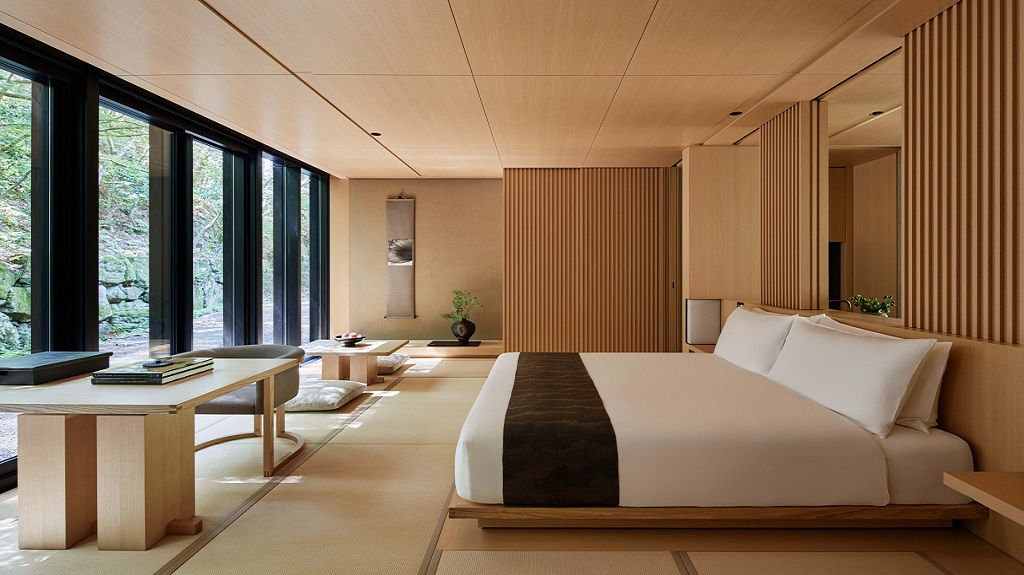
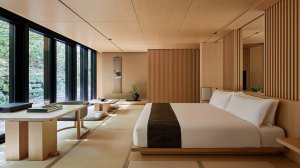 With Kyoto being our favorite city in Asia, we are most excited about the 24-room Aman Kyoto opened back in November 2019. The 80-acre site includes 72 acres of native forest and eight acres of traditional Japanese gardens. We are particularly impressed with the property’s location in the Takagamine district, walking distance to Kinkaku-ji (Golden Temple)! The property features spacious and light-filled interiors, similar to traditional ryokans; natural hot springs; and spectacular dining celebrating the unique culinary traditions of Japan using the finest local produce. With large floor-to-ceiling windows, the outside is brought in, allowing for a complete escape in total luxury.
With Kyoto being our favorite city in Asia, we are most excited about the 24-room Aman Kyoto opened back in November 2019. The 80-acre site includes 72 acres of native forest and eight acres of traditional Japanese gardens. We are particularly impressed with the property’s location in the Takagamine district, walking distance to Kinkaku-ji (Golden Temple)! The property features spacious and light-filled interiors, similar to traditional ryokans; natural hot springs; and spectacular dining celebrating the unique culinary traditions of Japan using the finest local produce. With large floor-to-ceiling windows, the outside is brought in, allowing for a complete escape in total luxury.
Aman Kyoto

With Kyoto being our favorite city in Asia, we are most excited about the 24-room Aman Kyoto opened back in November 2019. The 80-acre site includes 72 acres of native forest and eight acres of traditional Japanese gardens. We are particularly impressed with the property’s location in the Takagamine district, walking distance to Kinkaku-ji (Golden Temple)! The property features spacious and light-filled interiors, similar to traditional ryokans; natural hot springs; and spectacular dining celebrating the unique culinary traditions of Japan using the finest local produce. With large floor-to-ceiling windows, the outside is brought in, allowing for a complete escape in total luxury.


Similar to Tawaraya Ryokan (just across the alleyway), Hiiragiya is considered among the most noteworthy and famous ryokans in all of Japan. A stay at Hiiragiya represents a complete immersion into traditional Japanese culture. Enclosed in a traditional sukiya-style wooden structure, Hiiragiya was conceived in 1818 when Hiiragiya, a seafood dealer, began providing accommodation to traveling merchants. Later, Hiiragiya welcomed many members of the imperial family including writers, governing officials, and international celebrities. Proprietress Akami Nishimura only modestly acknowledges the many celebrities and world leaders who have stayed here (including Charlie Chaplain many decades ago). We give an A+ to both the Tawaraya and Hiiragiya, although we feel Hiiragiya is perhaps more accommodating and open to Western eccentricities.
Hiiragiya
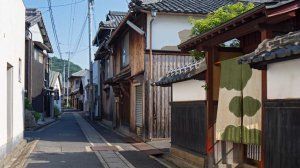 Similar to Tawaraya Ryokan (just across the alleyway), Hiiragiya is considered among the most noteworthy and famous ryokans in all of Japan. A stay at Hiiragiya represents a complete immersion into traditional Japanese culture. Enclosed in a traditional sukiya-style wooden structure, Hiiragiya was conceived in 1818 when Hiiragiya, a seafood dealer, began providing accommodation to traveling merchants. Later, Hiiragiya welcomed many members of the imperial family including writers, governing officials, and international celebrities. Proprietress Akami Nishimura only modestly acknowledges the many celebrities and world leaders who have stayed here (including Charlie Chaplain many decades ago). We give an A+ to both the Tawaraya and Hiiragiya, although we feel Hiiragiya is perhaps more accommodating and open to Western eccentricities.
Similar to Tawaraya Ryokan (just across the alleyway), Hiiragiya is considered among the most noteworthy and famous ryokans in all of Japan. A stay at Hiiragiya represents a complete immersion into traditional Japanese culture. Enclosed in a traditional sukiya-style wooden structure, Hiiragiya was conceived in 1818 when Hiiragiya, a seafood dealer, began providing accommodation to traveling merchants. Later, Hiiragiya welcomed many members of the imperial family including writers, governing officials, and international celebrities. Proprietress Akami Nishimura only modestly acknowledges the many celebrities and world leaders who have stayed here (including Charlie Chaplain many decades ago). We give an A+ to both the Tawaraya and Hiiragiya, although we feel Hiiragiya is perhaps more accommodating and open to Western eccentricities.

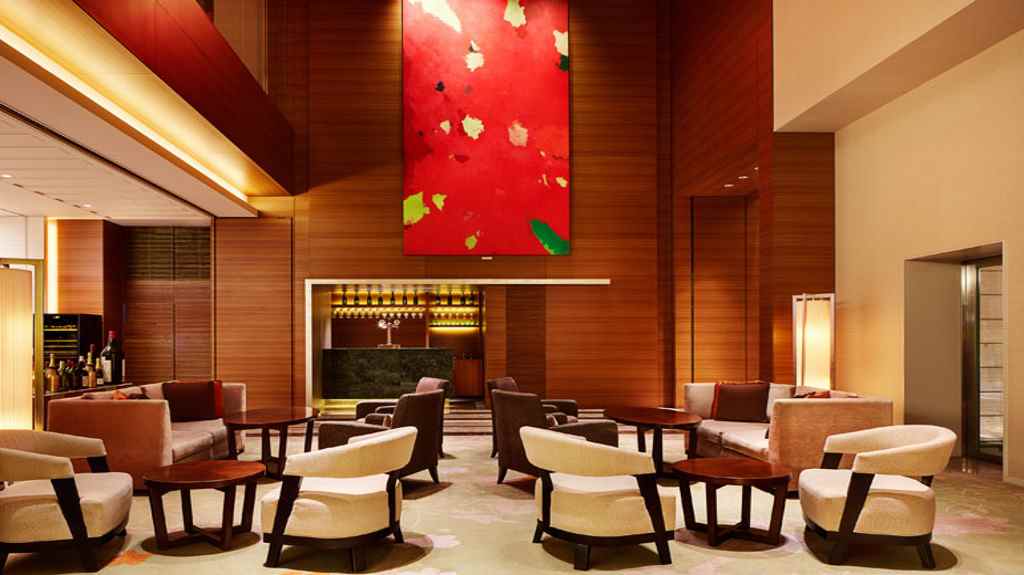
 Among the many 5-star luxury hotels we have used throughout the world, I cannot recall us staying at a Sheraton. However, we were most impressed with our recent visit to the relatively new 238-room Sheraton Grand Hiroshima, beyond a doubt the finest hotel in Hiroshima. Guests should enjoy the heartfelt, friendly staff and the updated room amenities.
Among the many 5-star luxury hotels we have used throughout the world, I cannot recall us staying at a Sheraton. However, we were most impressed with our recent visit to the relatively new 238-room Sheraton Grand Hiroshima, beyond a doubt the finest hotel in Hiroshima. Guests should enjoy the heartfelt, friendly staff and the updated room amenities.
Sheraton Grand Hiroshima Hotel
With the Hyatt Regency Kyoto having been the only Western 5-star luxury hotel in Kyoto for quite some time, we were excited about the February 2014 opening of the 134-room The Ritz-Carlton Kyoto. Living in a Mies van der Rohe high-rise in Chicago, we feel a particular affinity to the Hyatt Regency’s simple, clean, architectural design. Nevertheless, The Ritz-Carlton’s rectangular, low-slung property ideally situated in the Kamogawa River has definitely piqued our interest. Replicating the aesthetics of a traditional Meiji House, the design and amenities of The Ritz are quite impressive (including a French Haute Patisserie!). Though we are not big fans of the Ritz global brand (prefer AMAN/Peninsula/Mandarin/Four Seasons), we feel the Ritz to be currently the highest quality luxury “western” hotel in Kyoto.
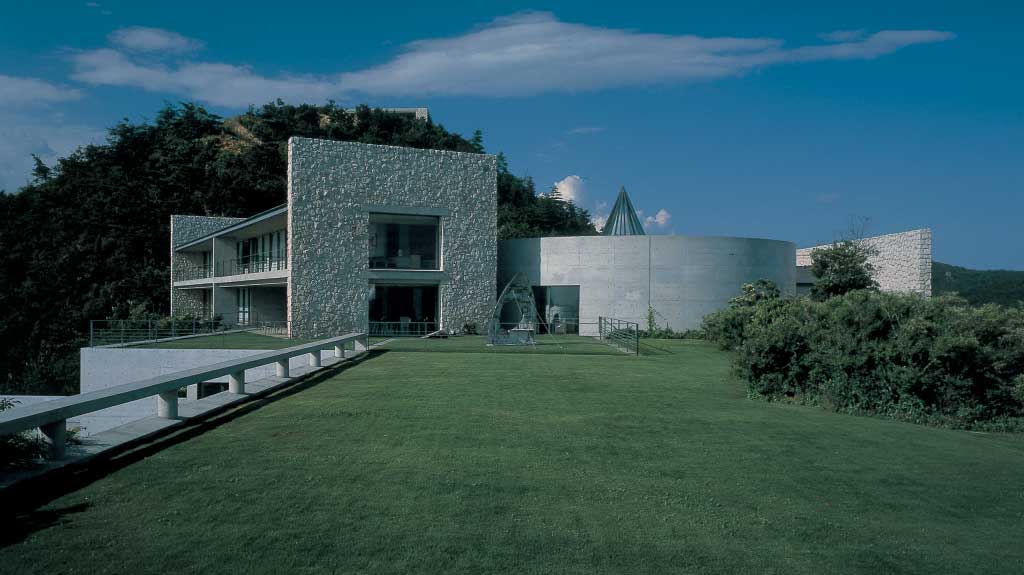
 The central lodging facility within “Benesse Art Site Naoshima” consists of four buildings: Museum (10 rooms) allows close contact with the artworks both in a public exhibition space and with each guestroom; the Oval (six rooms – our favorite!), offers beautiful panoramic views of the Seto Inland Sea and is connected to the museum by a monorail; Park (41 rooms) looks out to the green lawn with open-air artworks to the ocean and the mountains of Shikoku on the far shore, and contains an exclusive lounge, a shop, and Spa; and Beach (eight suites), located on the shoreline with suites only, provides beautiful views of the Seto Inland Sea. The Benesse House spa, La Villa, offers a variety of rejuvenating spa treatments.
The central lodging facility within “Benesse Art Site Naoshima” consists of four buildings: Museum (10 rooms) allows close contact with the artworks both in a public exhibition space and with each guestroom; the Oval (six rooms – our favorite!), offers beautiful panoramic views of the Seto Inland Sea and is connected to the museum by a monorail; Park (41 rooms) looks out to the green lawn with open-air artworks to the ocean and the mountains of Shikoku on the far shore, and contains an exclusive lounge, a shop, and Spa; and Beach (eight suites), located on the shoreline with suites only, provides beautiful views of the Seto Inland Sea. The Benesse House spa, La Villa, offers a variety of rejuvenating spa treatments.
Benesse House Hotel
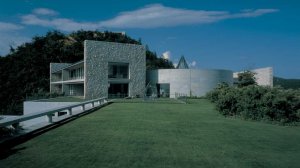 The central lodging facility within “Benesse Art Site Naoshima” consists of four buildings: the Museum (10 rooms) allows close contact with the artworks both in a public exhibition space and with each guestroom; the Oval (six rooms – our favorite!), offers beautiful panoramic views of the Seto Inland Sea and is connected to the museum by a monorail; Park (41 rooms) looks out to the green lawn with open-air artworks to the ocean and the mountains of Shikoku on the far shore, and contains an exclusive lounge, a shop, and Spa; and Beach (eight suites), located on the shoreline with suites only, provides beautiful views of the Seto Inland Sea. The Benesse House spa, La Villa, offers a variety of rejuvenating spa treatments.
The central lodging facility within “Benesse Art Site Naoshima” consists of four buildings: the Museum (10 rooms) allows close contact with the artworks both in a public exhibition space and with each guestroom; the Oval (six rooms – our favorite!), offers beautiful panoramic views of the Seto Inland Sea and is connected to the museum by a monorail; Park (41 rooms) looks out to the green lawn with open-air artworks to the ocean and the mountains of Shikoku on the far shore, and contains an exclusive lounge, a shop, and Spa; and Beach (eight suites), located on the shoreline with suites only, provides beautiful views of the Seto Inland Sea. The Benesse House spa, La Villa, offers a variety of rejuvenating spa treatments.


Receiving five stars in the Forbes Travel Guide, the Palace Hotel Tokyo is quickly emerging as one of the best luxury properties in Tokyo. Just five minutes from The Peninsula Tokyo (!), the Palace is located directly in front of the Imperial Palace and gardens, “Otemon Gate,” neighborhood of Aman, perfect for quick excursions, shopping, sightseeing, and night-walking. While we prefer the quiet serenity of properties with less than 200 rooms total, the Palace features 266 rooms and 18 suites that make up for its busyness with spacious contemporary designs and balconies with breathtaking views of the Imperial Palace. Additional amenities include ten (!) in-house restaurants and bars, a sizeable pool, and a wellness center with fitness and gym options. Don’t forget to visit the alpine-inspired Evian Spa, which features a giant private pool with floor-to-ceiling views of Tokyo (with Mt. Fuji in the distance!), daily yoga sessions, and a variety of facial, body, and ritualistic massage treatments.
Palace Hotel Tokyo

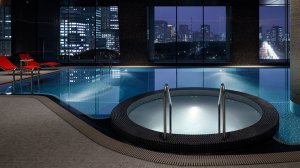 Receiving five stars in the Forbes Travel Guide, the Palace Hotel Tokyo is quickly emerging as one of the best luxury properties in Tokyo. Just five minutes from The Peninsula Tokyo (!), the Palace is located directly in front of the Imperial Palace and gardens, “Otemon Gate,” neighborhood of Aman, perfect for quick excursions, shopping, sightseeing, and night-walking. While we prefer the quiet serenity of properties with less than 200 rooms total, the Palace features 266 rooms and 18 suites that make up for its busyness with spacious contemporary designs and balconies with breathtaking views of the Imperial Palace. Additional amenities include ten (!) in-house restaurants and bars, a sizeable pool, and a wellness center with fitness and gym options. Don’t forget to visit the alpine-inspired Evian Spa, which features a giant private pool with floor-to-ceiling views of Tokyo (with Mt. Fuji in the distance!), daily yoga sessions, and a variety of facial, body, and ritualistic massage treatments.
Receiving five stars in the Forbes Travel Guide, the Palace Hotel Tokyo is quickly emerging as one of the best luxury properties in Tokyo. Just five minutes from The Peninsula Tokyo (!), the Palace is located directly in front of the Imperial Palace and gardens, “Otemon Gate,” neighborhood of Aman, perfect for quick excursions, shopping, sightseeing, and night-walking. While we prefer the quiet serenity of properties with less than 200 rooms total, the Palace features 266 rooms and 18 suites that make up for its busyness with spacious contemporary designs and balconies with breathtaking views of the Imperial Palace. Additional amenities include ten (!) in-house restaurants and bars, a sizeable pool, and a wellness center with fitness and gym options. Don’t forget to visit the alpine-inspired Evian Spa, which features a giant private pool with floor-to-ceiling views of Tokyo (with Mt. Fuji in the distance!), daily yoga sessions, and a variety of facial, body, and ritualistic massage treatments.
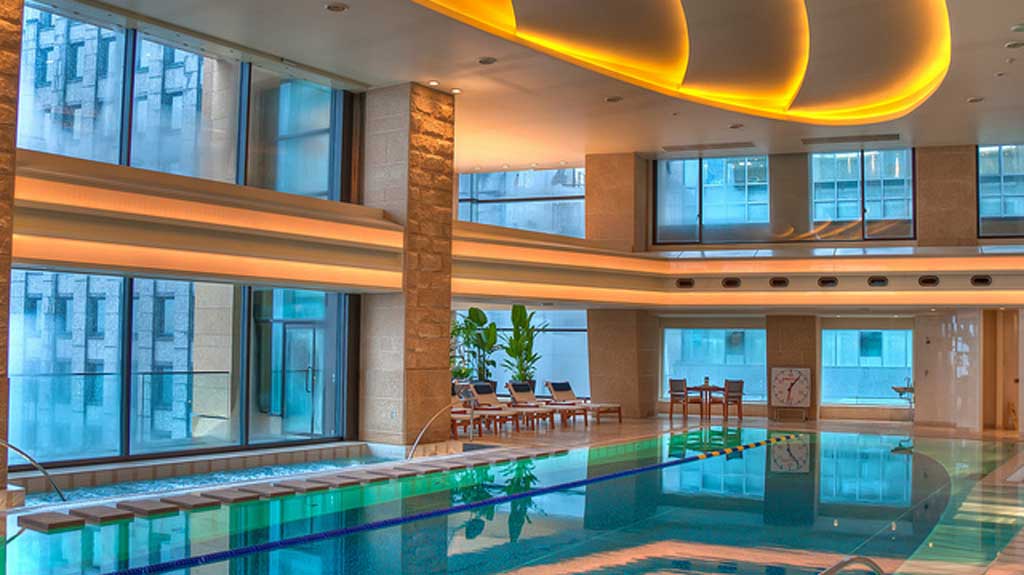
The 24-story Peninsula has the best luxury hotel location in Tokyo, directly across from the lovely Hibiya Park (think 5K run!), Imperial grounds, and adjacent to the amazing Ginza shopping district. Envisioned by architect Kuzukiyo Sato to look like a giant Japanese stone lantern, the freestanding Peninsula combines subtle Japanese hospitality with the Peninsula tradition of understated luxury. The rooms are among the largest in Tokyo, starting at 544 sq. feet. Cool amenities range from bedside consoles that control the drapes to Lavazza espresso machines. The rooms even offer a personal nail dryer! For our jogging friends, The Peninsula offers a nice 5K start to your day. Beginning across the street on the Imperial Palace’s grounds, a full 5K jog runs through the grounds and back through Hibiya Park. Zen rates the hot chocolate and the Peninsula’s amazing “vitality” pool as the best in all of Japan!
The Peninsula Tokyo
The 24-story Peninsula has the best luxury hotel location in Tokyo, directly across from the lovely Hibiya Park (think 5K run!), Imperial grounds, and adjacent to the amazing Ginza shopping district. Envisioned by architect Kuzukiyo Sato to look like a giant Japanese stone lantern, the freestanding Peninsula combines subtle Japanese hospitality with the Peninsula tradition of understated luxury. The rooms are among the largest in Tokyo, starting at 544 sq. feet. Cool amenities range from bedside consoles that control the drapes to Lavazza espresso machines. The rooms even offer a personal nail dryer! For our jogging friends, The Peninsula offers a nice 5K start to your day. Beginning across the street on the Imperial Palace’s grounds, a full 5K jog runs through the grounds and back through Hibiya Park. Zen rates the hot chocolate and the Peninsula’s amazing “vitality” pool as the best in all of Japan!
Locations
Japan Overview
| Temperature |
|---|
| Highs: High 70’s |
| Lows: Mid 60’s |
| Area |
|---|
| 377,864 SQ KM |
| 145,894 SQ MILES |
| Capital |
|---|
| Tokyo |
| Population |
|---|
| 125.9 Million |
| Language |
|---|
| Japanese |
| Currency |
|---|
| Japanese Yen |
Korea Overview
| Temperature |
|---|
| Highs: Low 80’s |
| Lows: Low 30’s |
| Area |
|---|
| 99,313 SQ KM |
| 38,345 SQ MILES |
| Capital |
|---|
| Seoul |
| Population |
|---|
| 51.7 million |
| Language |
|---|
| Korean |
| Currency |
|---|
| South Korean Won |


